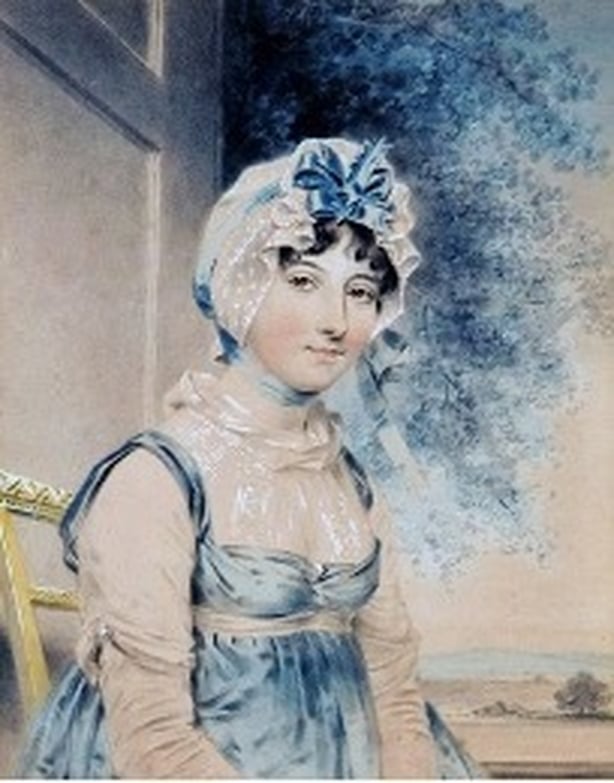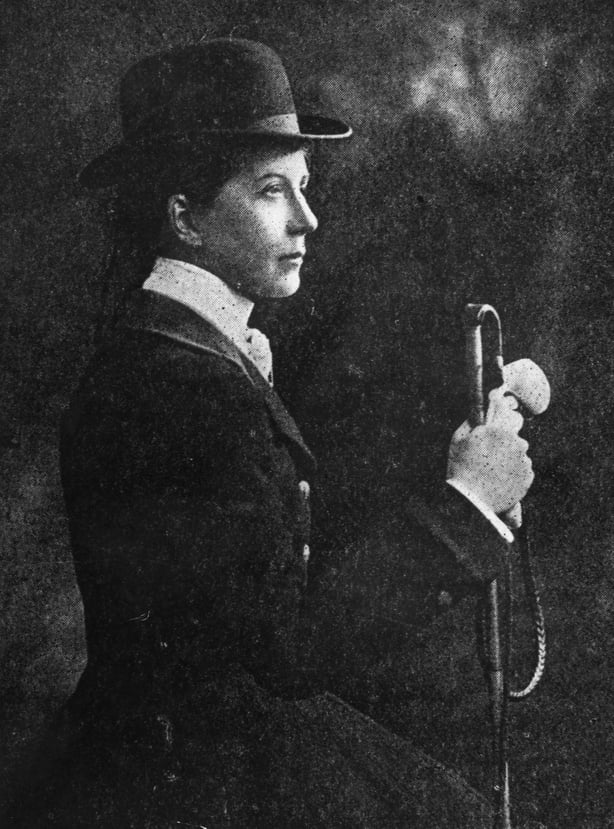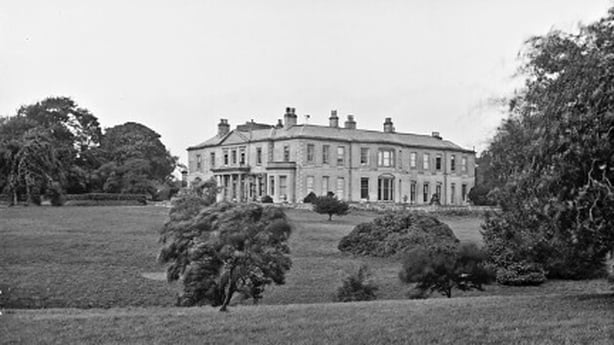Analysis: for over 200 years the Big House novel has remained a thriving literary tradition led by an array of Irish women writers, north and south
By Dawn Miranda Sherratt-Bado, Queen's University Belfast
The Big House occupies an ambivalent position in Irish culture and the literary canon due to its fraught historical symbolism and its perceived incongruity to modern state narratives. Nevertheless, Big House fiction has remained an immensely popular genre with readers since its inception.
The Big House novel was devised by a woman – Maria Edgeworth (1768-1849) – and from the beginning this genre has been dominated by women writers. Edgeworth's Castle Rackrent was published in 1800, the same year the Acts of Union were passed, and thereafter Big House novels have addressed Ireland’s state-of-the-nation.
Longford author Edgeworth’s seminal book established Big House fiction as an important vehicle for cultural critique, often via subversive techniques such as cunning humour, social satire, historical allegory, political references, literary allusions and Gothic motifs. A survey of Irish women’s Big House novels demonstrates how they have continued to reinvent this national literary form in order to chronicle Ireland’s cultural evolution across generations.
We need your consent to load this rte-player contentWe use rte-player to manage extra content that can set cookies on your device and collect data about your activity. Please review their details and accept them to load the content.Manage Preferences
From RTÉ Lyric FM, Biographer Susan Manly explores the radical life and work of the Irish writer Maria Edgeworth
As the duo Somerville and Ross, cousins Edith Somerville and Martin Ross (Violet Martin) recounted the nineteenth-century heyday of Anglo-Ireland and its Edwardian swansong. The Real Charlotte (1894) is a brilliant rendering of the Anglo-Irish gentry’s golden summer. After Ross’s death, Somerville continued to write on this theme and her superb solo novel The Big House of Inver (1925) relates the dramatic downfall of a minor dynasty in the West of Ireland.
Somerville and Ross’s Northern contemporaries Frances Elizabeth "F.E." Crichton, Bithia Mary "B.M." Croker, and Helen Duffin capture country house life from an Ulster perspective. Crichton’s poignant The Soundless Tide (1911) is set in a seaside manor on the north Down coast, where young love is tragically thwarted by sectarian tensions surrounding Home Rule.

The War of Independence and the Civil War sealed the demise of the Anglo-Irish class, with hundreds of Big Houses burned and many owners selling or abandoning their homes. A substantial number of women’s novels envision this tumultuous milieu. Cork author Elizabeth Bowen’s exquisite Big House burning tale The Last September (1929) is her masterpiece. Dublin-born Katharine Tynan’s The Golden Rose (1924) and her daughter Pamela Hinkson’s The Ladies’ Road (1932) movingly show the ways the Great War and the Easter Rising converge on the Big House.
Read more: How Irish Free State theatre excluded women from public life
Derry-born Kathleen Coyle’s absorbing A Flock of Birds (1930) conveys a mother’s turmoil when her rebel son is sentenced to death, and she flees the Big House for the Continent. The prolific Waterford-based Big House novelist Molly Keane, writing as M.J. Farrell, illustrates the Revolution’s impact on women in her masterful books Mad Puppetstown (1931) and Two Days in Aragon (1941). Donegal native Margaret Barrington’s vibrant My Cousin Justin (1939) traces a young woman’s trajectory from a Huguenot mansion in Malin to the heart of revolutionary Dublin.

From the post-revolutionary period through the mid-century there was an increase in genre-bending experimentation in women's Big House novels. Limerick native Kate O’Brien’s introspective The Ante-Room (1934) melds historical fiction, romance and religious reflection to portray the women of a nineteenth-century Catholic Big House. Kilkeel author Dorothy Grace "D.G." Waring combines the spy thriller and romance genres in her lively Big House caper Fortune Must Follow (1937).
Dundalk-born Dorothy Macardle’s uncanny The Uninvited (published as Uneasy Freehold in 1942) fuses the supernatural with oblique feminist commentary on post-independence Ireland. Elizabeth Bowen’s atmospheric The Heat of the Day (1948) is a Second World War spy thriller with an Irish interlude, and A World of Love (1955) is an immersive, epistolary ghost story set in a crumbling country pile. Lisburn writer Janet McNeill’s witty The Maiden Dinosaur (1964) depicts a mid-life queer awakening in a Belfast Big House.
We need your consent to load this rte-player contentWe use rte-player to manage extra content that can set cookies on your device and collect data about your activity. Please review their details and accept them to load the content.Manage Preferences
From RTÉ Lyric FM, James Conway interviews novelist Jennifer Johnston on 'The Invisible Thread'
In the 1970s and 80s, Dublin-born Jennifer Johnston came to the fore as a modern Big House novelist, arriving with The Captains and the Kings (1972), a meditation on Anglo-Ireland’s decaying splendour. Kildare author Leland Bardwell’s Girl on a Bicycle (1977) is a picaresque fable of a young woman who works as a groom on a large estate in the 1940s. Co. Down aristocrat Lady Caroline Blackwood based her deliciously macabre Booker Prize-shortlisted Gothic novella Great Granny Webster (1977) on the women of her Ulster Ascendancy family. Molly Keane’s wickedly funny tale of an audacious and broke daughter of the Big House, Good Behaviour (1981), was also shortlisted for the Booker.
The 1990s saw a burgeoning of Big House fiction set during the recent Troubles. Belfast author Niki Hill's Death Grows on You (1990), Co. Clare-born Edna O’Brien’s House of Splendid Isolation (1994), and Bantry writer Kate O’Riordan’s Involved (1995) all merge the Big House novel with the Troubles thriller, and the action criss-crosses the border between the Republic and Northern Ireland. Crossmaglen native Briege Duffaud’s sweeping epic A Wreath Upon the Dead (1993) explores the Troubles through a metafictional lens, relaying a woman’s bungled efforts to write a historical novel about south Armagh.

Dublin native Emma Donoghue’s Hood (1995) depicts a bittersweet lesbian love story set against a modern Big House backdrop. Another Dubliner, journalist Nuala O’Faolain, made her fiction debut with the vivid upstairs-downstairs historical romance My Dream of You (2001). Portstewart writer Bernie McGill’s chilling Big House Gothic The Butterfly Cabinet (2010) unravels a murder case that actually took place in the North of Ireland during the Victorian era.
Our contemporary moment is experiencing an efflorescence of Irish women's Big House fiction. Belfast-born Emily Hourican’s sparkling The Glorious Guinness Girls (2020) and its sequel The Guinness Girls: A Hint of Scandal (2021) spotlight the Bright Young Things Aileen, Maureen and Oonagh Guinness. Several recent Big House novels also reimagine the Revolution. Kildare-born Antoinette Tyrrell’s tender Home to Cavendish (2019) details a woman’s inheritance of a dilapidated Big House with links to the Civil War in Co. Cork. Cauvery Madhavan’s transportive The Tainted (2020) is set in her homeland of India and it limns a love affair between an Anglo-Irish soldier and an Anglo-Indian woman amid the 1916 Rising. Tyrone native Martina Devlin’s evocative portrait Edith (2022) fictionalises Edith Somerville’s attempts to protect her ancestral seat Drishane House in Cork from an IRA attack during the Revolution.
We need your consent to load this rte-player contentWe use rte-player to manage extra content that can set cookies on your device and collect data about your activity. Please review their details and accept them to load the content.Manage Preferences
From RTÉ Radio 1's Doc on One, Elizabeth Bowen was a famous novelist and a much-loved landlord of her ancestral estate Bowenscourt in North Cork. But was she a British spy?
For over two hundred years the Big House novel has remained a thriving literary tradition led by an array of Irish women writers, north and south. While this is not a comprehensive list, it exemplifies the genre’s considerable thematic range, formal flexibility and enduring appeal. Irish women’s writing showcases the Big House novel’s shifting relationship to Ireland’s complex history, and its continued relevance to modern Irish culture, from a remarkable variety of female perspectives.
Dr Dawn Miranda Sherratt-Bado is Visiting Scholar in the Institute of Irish Studies at Queen’s University Belfast. She is co-editor of the anthology Female Lines: New Writing by Women from Northern Ireland (Dublin: New Island Books, 2017). Her current research is funded by the Arts Council of Ireland.
The views expressed here are those of the author and do not represent or reflect the views of RTÉ

